China - Table of Contents........... Architecture Around the World
Great Wall of China
Photos of an authentic section that has not been rebuilt for tourism
The Great Wall is a UNESCO World Heritage Site.
| The Great Wall of China
is a series of fortifications made of stone, brick, tamped earth, wood,
and other materials, generally built along an east-to-west line across
the historical northern borders of China in part to protect the Chinese
Empire or its prototypical states. Several walls were being built as early as the 7th century BC; these, later joined together and made bigger and stronger, are now collectively referred to as the Great Wall. Especially famous is the wall built between 220–206 BC by the first Emperor of China, Qin Shi Huang. [See also Emperor Qin Shi Huang's Mausoleum (Terra Cotta Warriors).] Little of that wall remains. Since then, the Great Wall has on and off been rebuilt, maintained, and enhanced; the majority of the existing wall was reconstructed during the Ming Dynasty. Other purposes of the Great Wall have included border controls, allowing the imposition of duties on goods transported along the Silk Road, regulation or encouragement of trade and the control of immigration and emigration. Furthermore, the defensive characteristics of the Great Wall were enhanced by the construction of watch towers, troop barracks, garrison stations, signaling capabilities through the means of smoke or fire, and the fact that the path of the Great Wall also served as a transportation corridor. - Wikipedia (online December 2013)
|
| The winding Great Wall is not merely a wall but instead a complete and
rigorous defense project composed of countless passes, watchtowers,
garrison towns, beacon towers and blockhouses. These fortifications
were arranged in certain ways under the control of the military command
system at all levels. For example, there were about 1,000,000 soldiers
guarding the Ming's Great Wall. The chief military officers were
stationed in garrison-towns, while lesser officials and soldiers were
stationed in Guan Cheng (the defensive beachhead) and other smaller
fortifications. The eleven garrisons were set up along the wall in
order to guard the precinct or subsection. - TravelChinaGuide.com (online December 2013)
|
| About every 100 yards down
the Great Wall, the workers were forced to build a watchtower 45 feet
high to spot the enemies and light a signal fire to warn all the
soldiers along the wall to prepare for an enemy attack. The
workers that had died were buried inside the wall. The wall was
worked on throughout hundreds of years. Later on in the Ming
Dynasty (about 1,000 years after Ch’in Shih Huang Ti), the Ming emperor
extended the wall’s plans to make it run to cover more of the provinces
and to Jiayuguan (gate to the famous Silk Road). In 1215, Genghis Khan (Temuchin) of the Mongols finally penetrated the Great Wall and took over northern China after four years of continuous attacks. The Mongols were the only invaders to ever have defeated China after the Great Wall was built. |
| Signal towers: were also called beacons,
beacon terraces, smoke mounds, mounds, or kiosks. They were used to
send military communications by beacon (fires or lanterns) during the
night or by smoke signals in the daytime; other methods such as raising
banners, beating clappers, or firing guns were also used. Signal
towers, often built on hilltops for maximum visibility, were
self-contained high platforms, or towers. The lower levels contained
rooms for soldiers, as well as stables, sheepfolds, and storage areas.
Great piles of straw and dung used to build signal fires have been
found during excavations. |
 Total distance of the wall: 5,500 miles. Distance between San Francisco and New York City: 2,900 miles.  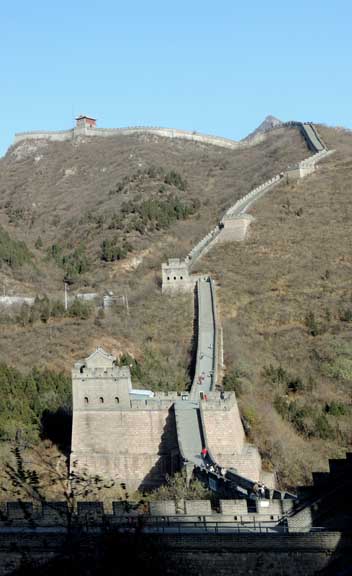 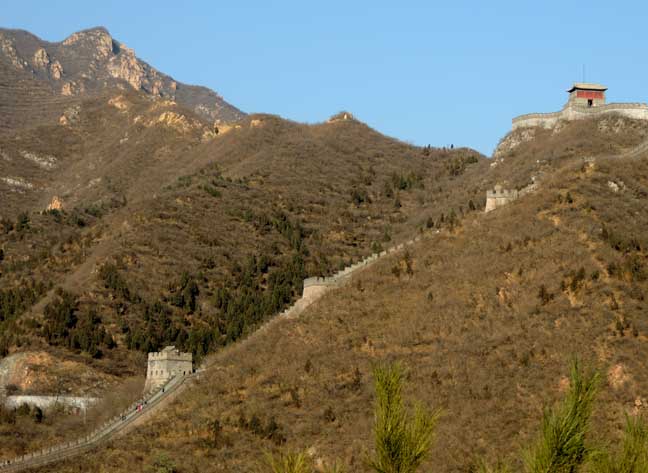 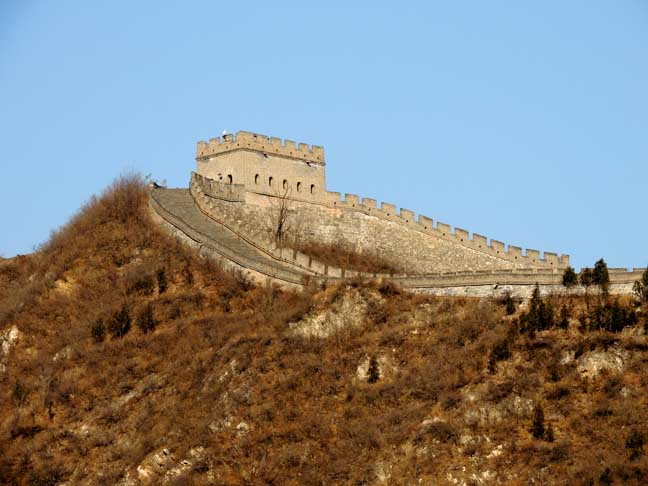 One of the 723 beacon towers. The crenelation indicated that this side of the Wall faced Mongolia.    Left side of wall: China interior. 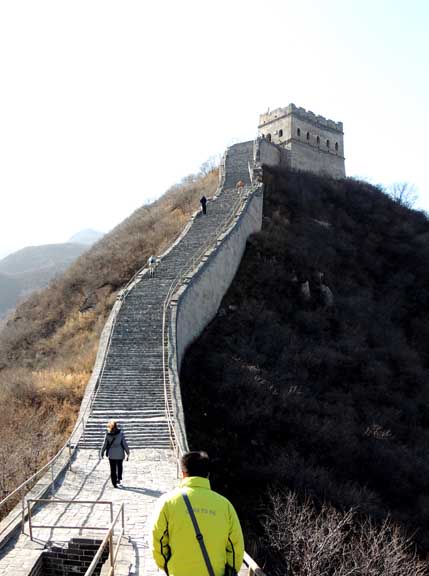 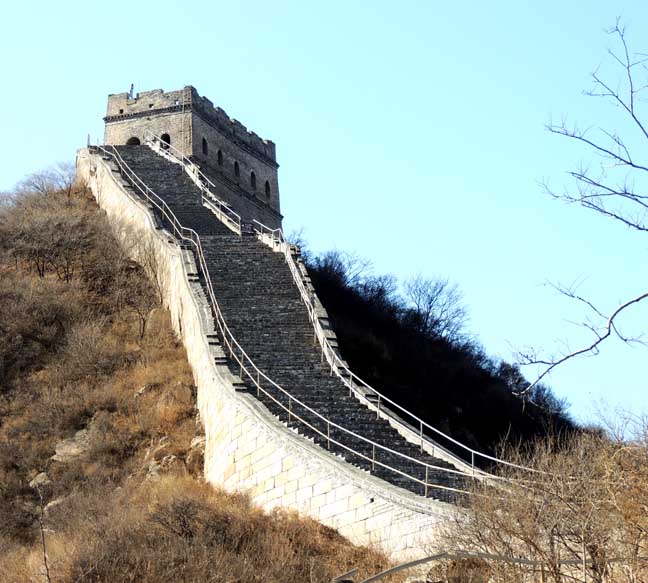 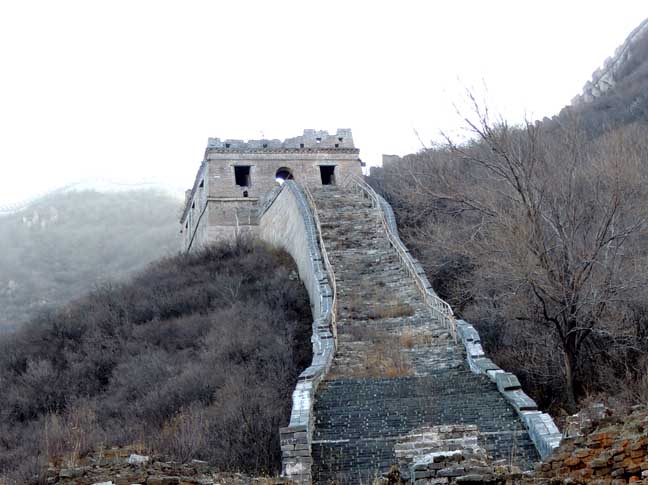  Guard rails financed by Grand Circle Travel Co.  Beacon tower. Bricks were cemented with a mixture of sticky rice and egg whites.    |

